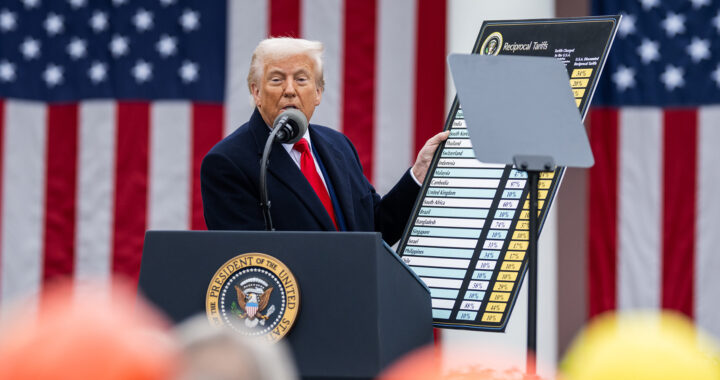The second Trump administration stunned the global community when it announced sweeping tariffs on about 90 countries on 2 April 2025. The specific executive order called these import taxes “reciprocal tariffs” and upheld the argument that this decision is intended to address trade practices that contribute to large and persistent annual United States trade deficits.
Inside the Logic Behind the Tariff List: How the Second Trump Administration Decided Which Countries to Tariff and Possible Use of Artificial Intelligence
Explanation From the Trump Administration
Donald Trump underlined the need for higher import taxes to address the annual trade deficit and push relevant domestic and foreign policy agenda during the 2024 campaign period. Hence, upon assuming office in January 2025, he threatened Canada and Mexico with tariffs. His administration then announced a 10 percent universal tariff on all imports on 2 April 2025.
About 60 countries are also under high tariffs due to various reasons. Those with significant trade surpluses with the U.S. were prioritized. These include China, Vietnam, and Cambodia. Countries that have existing high tariffs or high non-tariff trade barriers against American exports also have higher tariffs. Examples include India and the European Union.
Nevertheless, based on the above, the second Trump administration came up with a long list of countries to tariff based on trade deficits and existing tariff and non-tariff trade barriers. It is also worth mentioning that tariffs on countries like Canada, Mexico, and China also tie into broader issues such as immigration, drug trafficking, and national security.
The tariffs were calculated based on the magnitude of trade deficits and an assessment of the trade practices of each country. The formula starts with the U.S. goods trade deficit with each country. This deficit is then divided by the total value of goods imported from that country. The result produces a percentage. This figure is then halved to produce the final tariff rate.
China has a USD 295 billion trade deficit and USD 440 billion in imports. This means 295 billion was divided by 440 billion to produce 67 percent. This is then halved to 34 percent. The existing 20 percent tariff was added to produce the 54 percent total tariff rate. The same formula produced a 49 percent tariff for Cambodia and 20 percent for the European Union.
Evaluation and Assessment From Observers
The entire tariff list is exhaustive. A further look would reveal that the U.S. has placed several unknown places under universal reciprocal tariffs. These include places like Heard Island and McDonald Island, a remote Australian territory with no permanent human population and minimal economic activity in the Antarctic, which was hit with a 10 percent tariff.
Another remote Australian territory in the Pacific called the Norfolk Island faces a 29 percent tariff. This territory is home to about 2000 human population. The small archipelago British Indian Ocean Territory, which is located in the Indian Ocean and home to a military facility shared by the U.S. and the United Kingdom, was also included in the tariff list.
Note that the territories above have no trade activities with the U.S. Both critics and observers have speculated that this is one of the signs that the Trump tariff list was influenced by artificial intelligence. Futurism senior editor Victor Tangermann compiled reports showing how generative chatbots like ChatGPT and Grok produced outputs akin to the list.
Critics on the social media platform X also alleged that the list was derived from internet top-level domains or TLD names. This assumption comes from an observation that several tariffed entities correspond to TLDs rather than sovereign nations or main trading partners. It is possible that an AI chatbot accessed a TLD database when generating a list of countries.
There is still no definitive proof that the Trump tariff list and tariff rates were determined using a generative AI application. However, considering the move-fast strategy of the second Trump administration, it is possible that the team, under pressure to produce a comprehensive tariff plan as fast as possible, could have turned to generative AI for assistance.
FURTHER READINGS AND REFERENCES
- Garcia, C. 20 March 2025. “The ‘Move Fast’ Strategy of the Second Trump Administration.” Konsyse. Available online
- Tangermann, V. 3 April 2025. “Trump Tariffs Show Signs of Being Written by AI.” Futurism. Available online
- The White House. 2. April 2025. “Fact Sheet: President Donald J. Trump Declares National Emergency to Increase our Competitive Edge, Protect our Sovereignty, and Strengthen our National and Economic Security.” The White House. Available online
- The White House. 2 April 2025. “Regulating Imports with a Reciprocal Tariff to Rectify Trade Practices that Contribute to Large and Persistent Annual United States Goods Trade Deficits.” The White House. Available online
